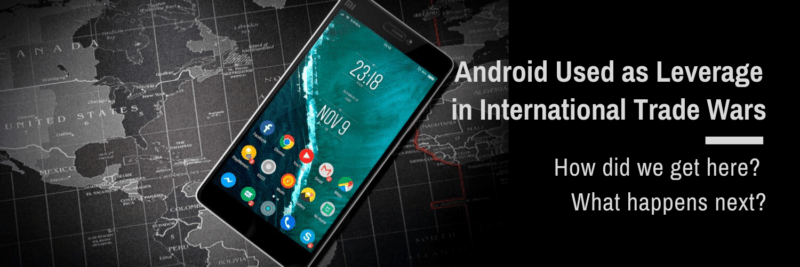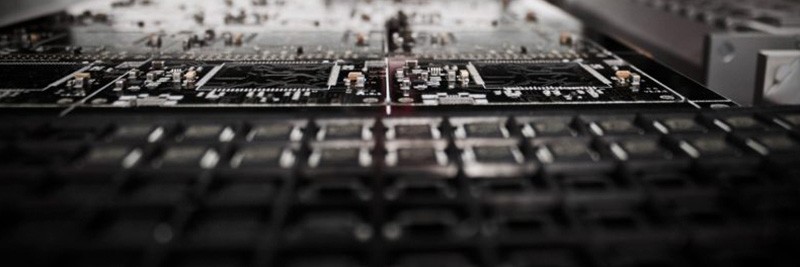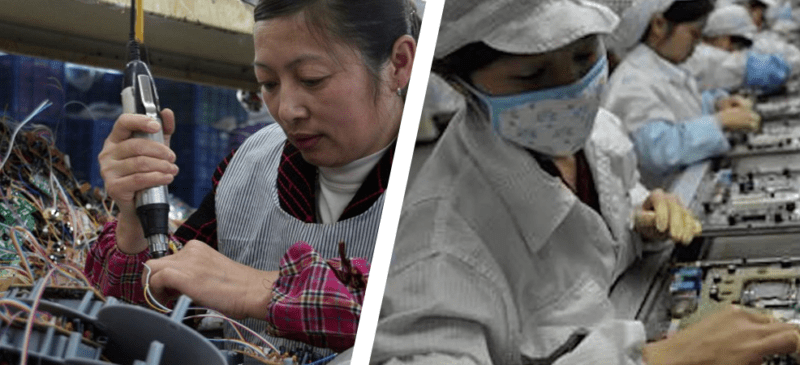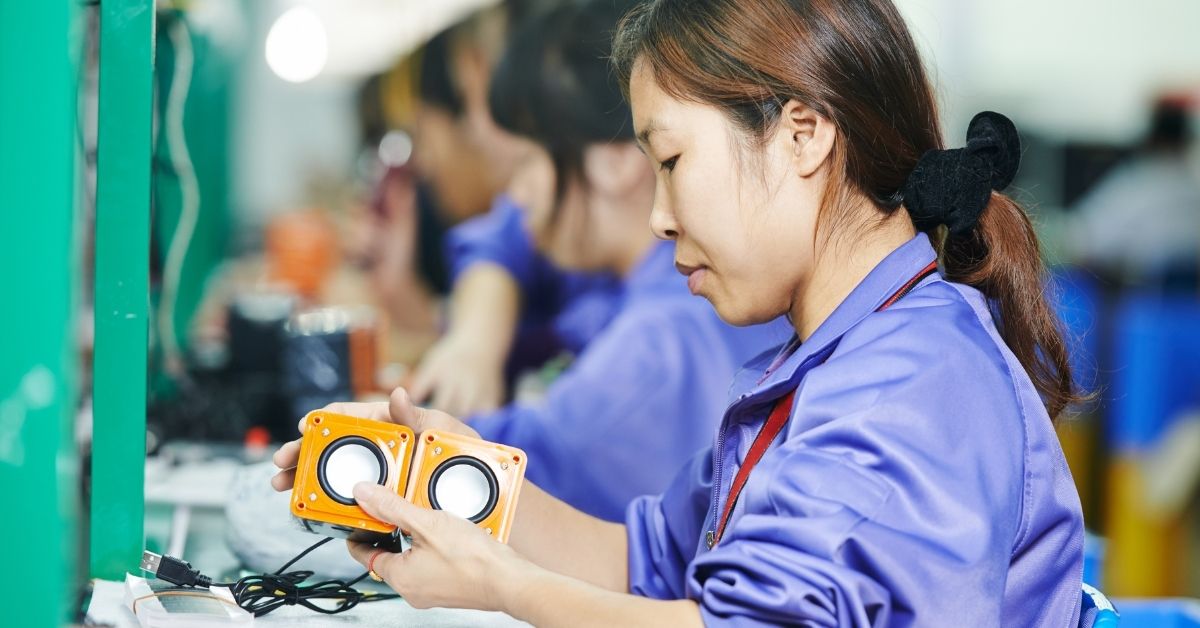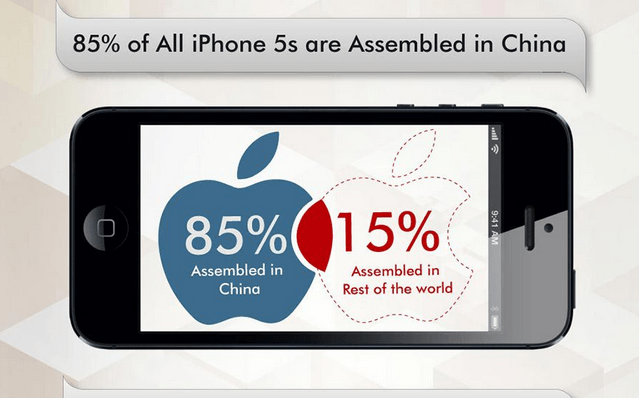Android is being used as leverage in the trade war between economic superpowers, U.S. and China. Here’s how it escalated and what’s next for the industry.
Continue readingJuggling Curve Balls: Electronics Manufacturing in China – Part 2
This is a continuation of a previous article about what happens behind the scenes of production for large retail orders.
Continue readingJuggling Curve Balls – Electronics Manufacturing in China
Read about Hatch founder Ben Dolgin-Gardner’s personal experience with electronics manufacturing in China, and how companies there succeed in a tough industry.
Continue readingThe Evolving Role of China’s Electronics Factories
Read about the evolving role of China’s electronics factories, from a system that revolved around cheap labor to the rise of factories built for efficiency.
Continue readingChinese Sweat Shops Shifting Into High-Tech Manufacturing
While it’s true that Chinese sweatshops with 15-hour work shifts still exist, more and more factories are shifting to high-tech manufacturing and better salaries. Find out why.
Continue readingShould You Manufacture Your Smartphone In China?
This is an interesting subject to think about. Chinese goods are always looked upon with contempt.
They are cheap, unreliable and not meant for the American or European market. At least that’s the general opinion.
Obviously, Chinese smartphones just can’t compete with the greats like iPhone and even Samsung.
This is where you go wrong. Lately, there have been many Chinese smartphone manufacturers who have started competing head-on with big names.
Are Chinese Goods Made Of Poor Quality?
Did you know that 85% of iPhones are assembled in China?
If iPhones assembled in China can be of such high quality, there is no reason why other smartphone manufacturers cannot produce quality goods.
At the same time, it’s also true that most Chinese manufactured products are inferior. There are several reasons why there is such a variance in quality.
The foremost reason is quality control. Local Chinese manufacturers in their hurry to roll out their smartphones avoid or downright ignore quality control aspects.
This is a recipe for disaster. However, these enterprises justify their casual attitude claiming that the rock bottom cost of their devises compensates for the poor quality.
The consumer in China is also not bothered as long as the price is cheap. These manufacturers fail miserably when they try to sell in mature markets like US and Europe.
The quality of a product clearly depends on our attitude and emphasis. Choosing the right partner and manufacturer in China is critical to your success.
The second reason for churning out poor quality devices is the quality of components and raw material.
Sourcing the right components is an important factor in the overall quality of finished product. This aspect is tougher than it looks.
Discriminating between bad and good suppliers requires knowledge of the local market and environment.
There are many fly by wire operators who simply vanish after pocketing the advance. Chinese market is quite tricky and many US and European enterprises have burnt their hand here. You should therefore be extremely careful while choosing suppliers.
The third reason impacting quality is the actual manufacturing process. The factory facilities can make or break a product.
Seasoned outsourcing experts are aware of this fact and therefore choose manufacturing and assembly partners with extreme care.
Cost is sometimes a reason why some may turn to unknown Chinese manufacturers. This is not a good practice since culturally the locals are known to cut corners, eventually leading to sub-standard products.
The Culture Factor
More than anything else, you have to understand the culture and mindset of the local Chinese businessmen.
There is a tendency to make a killing from a single contract and there is a lack of long term commitment.
This psychological barrier has to be somehow breached if you want to produce quality products in China.
One way is to get US or European management to handle the manufacturing processes in China.
These professionals know the Chinese market well and can ensure that your product is manufactured using quality components and in a proper factory environment.
In the end, the cost incurred in engaging a professional unit can be easily justified and compensated by superior quality products.
This is an interesting subject to think about. Chinese goods are always looked upon with contempt.
They are cheap, unreliable and not meant for the American or European market. At least that’s the general opinion.
Obviously, Chinese smartphones just can’t compete with the greats like iPhone and even Samsung.
This is where you go wrong. Lately, there have been many Chinese smartphone manufacturers who have started competing head-on with big names.
A Complete Supply Chain Solution
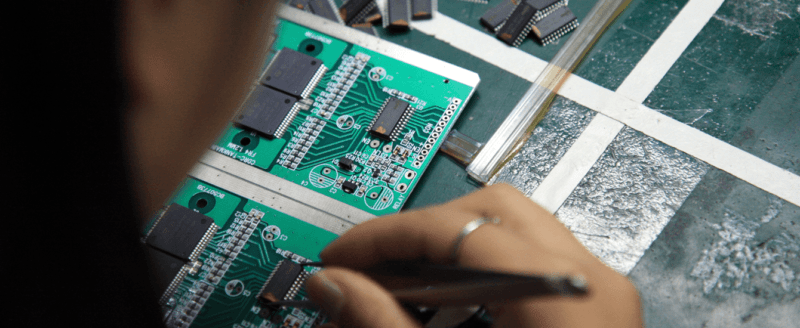
It’s no secret that China is and will remain a hub for high-quality, affordable manufacturing into the distant future. Companies continue to flock here even though the initial boom appears to be over and production costs are slowly increasing. Companies choose China because its manufacturing infrastructure remains second to none and will take years to emulate in Western countries like the U.S. and Europe.
Even though China has a well-established infrastructure, there are still gaps in the supply chain. Language and cultural differences with China continue to cause problems for overseas companies. Foreigners in China have seen these gaps and are leveraging local resources in a Western way to provide extra support for overseas companies. These system integrator/ bridge style companies run by Westerners are providing a complete supply chain solution so overseas companies can have smoother manufacturing but still take advantage of local prices. System integrators offer much more than just a familiar face to a client; they offer complete support from development to final delivery.
There are a number of different options when it comes to having your electronics manufactured in China, all with different pros and cons. Your most independent option is to choose to work directly with all participants in the supply chain, from finding your own IC company or a solution house for your PCBA board design to approaching a molding factory to have the case designed. Then you will have to source screen, TP and battery suppliers so everything can be delivered to the assembly factory for trial and mass production before being shipped out on air or sea freight. This is an option for many companies, but it requires more time and resources. Often the relationships with the factories have not already been made and it takes time to understand the market place. This is where solution houses, ODM/OEM factories and system integrators can provide additional support for overseas companies.
A Solution House
Solution houses will generally offer only hardware and software support for your product. They will work closely with one or a couple IC companies, depending on their size, and have a selection of pre-designed boards using these IC companies’ chip sets. For many clients this is the best solution as it is faster than getting a custom board made. Since the solution houses work only with specific IC companies, you can be limited with what chip set you can use. Clients can be put off by this and will go directly to the IC company they want for support, adding extra time and hassle. The solution house can also offer a custom board design which takes far longer to manufacture but is sometimes the only option for a client with a unique product. Having a custom board designed will sometimes incur a higher cost because the client might not be aware of all the component prices and does not have the necessary experience to negotiate price. A solution house can also help develop and visualize your design ideas but rarely has English-speaking staff. Communication difficulties are common; ideas are often lost in translation. Solution houses don’t work closely with assembly factories so designs are often revisited when they don’t meet production requirements. A solution house will offer as much support as you pay for. If your budget or order size is big enough, they will recommend component suppliers for screens, TP, etc. and also find a case molding supplier as they have these preexisting relationships. Overall a solution house will offer clients enough support for them to get their product to an assembly factory, but a client will still have to manage assembly, quality control, and logistics afterward.
An ODM/OEM Factory
An ODM/OEM factory can offer clients full service for the production of their products. They already have relationships with suppliers so they can save you time on production as they have all the links in the supply chain ready to go. They tend to be more general and don’t have the flexibility or product development needs that a system integrator has, but can give you a small amount of development expertise if the client requires. ODM/ OEM factories will usually have English-speaking staff but are generally not run by Western management, so cultural differences still create problems throughout the production process. Overall if the project has little development required, an OEM/ODM factory can quickly turn around a project at low cost but won’t give all the support a small business might need if they are inexperienced in bringing a project to market.
A System Integrator
A system integrator is the complete supply chain solution and is able to save time by better understanding customer needs though Western management and customer service. A system integrator will work with a client from the beginning of a project as early as the initial R&D stages and take responsibility for the project so the client can have a more relaxed but also very involved experience. They will work with the client on all aspects of development from packaging design to individual component pricing to method of shipping and basic branding and marketing strategy. A system integrator will simultaneously work on development and manufacturing which can speed up time to delivery as well as reduce overall cost. Through a better understanding of design for manufacturing, a system integrator can work with many solution houses and assembly factories to ensure designs are scalable for mass production and producible at the best possible price. With an extra layer of quality control with the system integrator, assembly factories are forced to take more effort to produce higher quality products because there is another level of control for them to pass before shipping goods. Overall a system integrator brings together all the elements of the supply chain so a client can have as much control as possible of price and quality with as few barriers as possible compared to what they might otherwise find going it alone.
Why Building Close Business Relationships in China Can Increase Your Profitability

How to Connect with the “Laoban”
When doing business in a country like China you will undoubtedly face your fair share of problems. Putting China’s history, cultural differences, and government policies aside, you still have to contend with the language barrier. But the pros of high volume and low cost quality manufacturing are unlikely to scare any prospective company away. This is where focused relationship building comes into play. If you are doing business in China or want to do business in China you need to understand how the Chinese conduct themselves in business relationships.
Business relationships differ on many levels but the standard Western viewpoint is a win/win proposition where a contract between two parties is designed for their mutual benefit and eventual long-term growth and profitability. This approach may be ideal for the Western world, but when venturing into China, business relationships change and can become far more complex and personal.
When you first establish a relationship within China it is important to come across with conviction. If you are sourcing a factory through Alibaba.com or another similar website you will likely be contacting a salesperson. He or she receives numerous emails from people with false claims with the intension of getting pricing quotes to leverage against existing factories or with other non-productive intensions. This means factories will likely dismiss non-genuine and also low-volume inquiries. The key is to come across with genuine interest. State what you want, state the quantity, and state your market. If possible, visit the factory at a trade fair or on its premises since meeting face-to-face will only help build rapport and prove your commitment.
After establishing this initial relationship, it is important to avoid believing the standard Western stigma of China as a producer of “cheap crap” with low wages and horrible human rights conditions. Harboring this impression is only going to be detrimental to your relationships. Doing business in China is not a get in/get out sort of relationship. Chinese factory owners dislike this attitude. Even though they will likely accept your order, it will not build good rapport. These factories can be valuable long-term partners for your company and also for your own personal growth. It’s the relationship you build with the “Laoban” owner or manager that can be the most beneficial. The rigid hierarchy within Chinese companies can lead to important decisions being made by the owner, so it is important to have this close relationship. This is why building strong personal relationships with business partners in China can, in the long run, increase your profitability.
Why Guanxi and Keeping Face are Important
Relationships are important all over the world, but when doing business in China the relationship is paramount. “Guanxi,” described most basically as the personal connection between two people, is the foundation of all business deals within China. Building guanxi takes time. It has the premise that if you can build trust with someone, he or she will do business with you. Alongside building these new relationships you need to maintain the old ones. Similar to having a close friend, it is not uncommon to offer meaningful gifts to your business contact’s friends and family, go for dinners and attend social events, and also offer mentoring and advice when there is no money involved. These thoughtful gestures will strengthen the guangxi relationship you have and open doors that would otherwise be closed to you.
It is important within a business relationship to see it as a partnership and to see every party as equal. Being aggressive or appearing to be above someone is disrespectful. It has been known that coming on too strongly when things don’t go as planned can result in a “loss of face” for the Chinese factory and an end to the relationship. This will happen regardless of what or who caused the problem. “Face” is very important in Chinese culture. “Face,” equated to Western values, means reputation. If you imply that people have made a mistake by messing up an order or failing to act on something, they will “lose face” and their reputation will be tarnished. CEOs in China have committed suicide after losing face and shaming themselves after bad business deals. This is why working problems out as a partnership, whoever is to blame, is a way to maintain these relationships and build deeper guanxi.
Whoever is to blame when approaching problem issues with factories, it is paramount not to lose your temper. You should stay relaxed and keep blame to a minimum. The way to resolve issues like this is to forget who is liable and work out a solution. Use W. Edwards Deming’s rule, “Focus on the process, not on the people.” Chinese factories typically don’t accept returned goods and will help out only if you deal with the situation appropriately. Conversely it is important not to be perceived as a pushover. Respect your Chinese partners but also politely demand respect back.
Establishing and maintaining relationships in a foreign country can be challenging but can pay off by being respectful and patience. If you approach situations in China with the correct attitude you will “keep face”, build guanxi and then you can see profits in your business as it flourishes.
Getting The Most From OEM Manufacturing in China
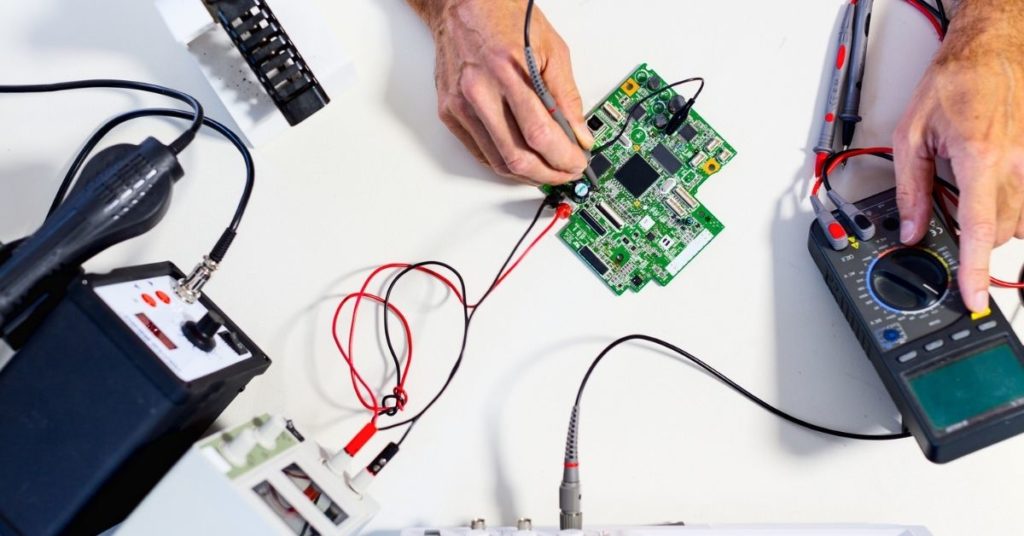
There are many reasons you should consider transferring your OEM manufacture to China, particularly if you are involved in the area of consumer electronic equipment. The main incentives, however, are the low-labor costs and the wealth of manufacturing experience and expertise that exists within the country.
But before you begin to outsource your OEM manufacturing, there are certain aspects you really need to consider. These are areas which will help you to find the best possible OEM manufacturing solution for your particular circumstances.
Here’s a guide to help find out what’s going to work for you.
Have you defined your problem?
If you haven’t defined the problems you are looking to solve through outsourcing, then it’s likely that your OEM manufacturing arrangement isn’t going to deliver the best value for money.
You’ll want input from across your organization to do this in an effective manner and to answer questions like, “What technologies will the OEM supplier need, to make your product in the right way?”, “What after sales support is available if, or when, problems arise?”, “How will you integrate the manufacturer into your supply chain?”
The best possible supplier will add value by making their strengths compensate for your weaknesses and enable you to de-emphasize or eliminate internal issues.
Have you done your due diligence?
It’s easy to be overwhelmed by options when looking to outsource your OEM manufacturing and it’s easier still to get so focused on price that you don’t do your homework on the suppliers.
Cost is only a part of the equation for choosing a successful OEM supplier. It’s just as important to work with a partner that understands you and your business, can guarantee a quality output and has a successful track record of working in your industry and providing real-life solutions to business problems.
You need to involve the right people from your organization to ask the right questions, and find the right supplier to respond to their needs, not just in a meeting but all the way through the design, production and delivery of your OEM products.
Have you picked the right product at the right time?
ODM manufacturing (Original Design Manufacturing) can help you eliminate some of the risks associated with tying up internal resources, but OEM manufacturing means outsourcing some of an established product range or branding an already existing product.
It’s important to start with the right product and trial the process, learning to work with your OEM provider in the most efficient way possible before you expand the program to other products.
When you do this it’s also important to communicate your OEM product road map, so that your OEM supplier can understand the process from their own point of view too. A small scale project may not cause a rush of attention with an OEM manufacturer but a an OEM manufacturing management company will often be only too pleased to assist as long as they know there will be long-term returns for them and for you.
Have you defined your internal OEM management processes?
One of the potential areas that can cause an outsourcing relationship to fail is having too many people on your end handing out instructions piece-meal to your OEM supplier. That’s because it leads to confusion regarding objectives and raises the risk of poor communication on the part of both sides in the arrangement.
It’s best to allocate a single point of contact at your company and for the OEM manufacturer to offer the same in return. The management and communication process should be outlined either in a memorandum of understanding or contractually, so the proper level of responsibility can be assumed by both sides of the arrangement.
Are you just chasing price?
Sometimes if the price appears to be too good to be true, it really is. It’s important to secure a relationship which improve your profit lines but still enables the OEM supplier to make a profit too. This means that your business will always be a priority and given the attention that it deserves. If the OEM manufacturer isn’t making money then you face some potentially disastrous consequences – the provider may go into insolvency with you losing any investment you have with them, or they may deprioritize your business when better opportunities arose. Worse still; they may close their arrangement with you and leave you floundering for another supplier.
SZCEIT understands exactly how OEM manufacturing in China can be of great benefit to your business, and can work with you to help you get the best value from the process.
Why Chinese Manufacturing Has The Edge
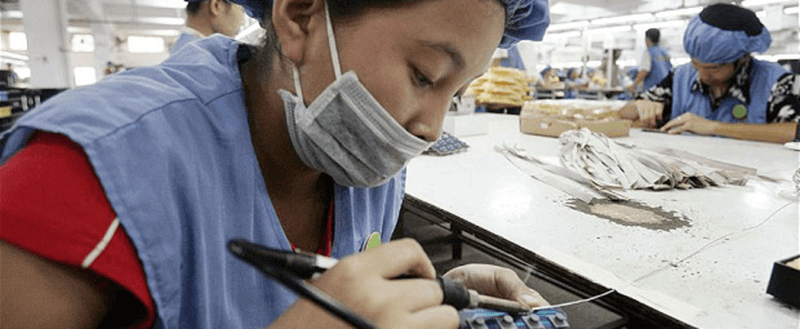
The Supply Chain
There has been a great deal of media interest in the idea that manufacturing in China is starting to become less appealing to Western companies. There has been speculation that wage cost advantages will gradually erode and that perceptions of poor quality and business environments will drive production back home.
What this speculation fails to take into account, however, is one of the main advantages that China holds; something which is unaffected by any of these factors – the proximity of the supply chain. What many people think of as ‘manufacturing’ is more along the lines of assembly – the individual components are manufactured separately, possibly in many different factories, and then assembled into the finished product by another manufacturer.
It’s not just assembly work that has been outsourced around the world; it’s also the individual component production. Now, it’s true to say that not all of that production has moved to China, but it’s also worth recognizing that the vast majority of components are produced in Asia. South Korea and Taiwan have made big gains based on successful production of components and even countries like Thailand and Malaysia have started to get in on the act.
China also has many factories dedicated to component manufacture and this is where one of the key advantages comes from for Chinese companies. If manufacturing moves back to the West, it means that assembly will move back first. This puts Western organizations at a huge disadvantage, particularly in the United States, because it places them a long way from the companies that will make the components for their products.
In terms of production times, this may be a fatal error. If a Shenzhen based manufacturer buys its components locally and there’s a problem, it’s easy to instigate return processes. It’s also cheap in terms of logistics as the goods don’t have to move very far to be returned. A face-to-face meeting enables problems to be overcome quickly with the minimum amount of disruption to the deadlines for delivery.
For an American manufacturer they’ll need to be able to communicate at a local level with their component providers and deal with all of the associated language and cultural barriers. Then they’ll need to ship their returns overseas back to Asia (which is expensive and time consuming in itself). They’ll have to hope that the supplier understands their issue and is willing to remedy it quickly, which they may or may not be willing to do without a whole heck of encouragement. And then they have to wait for the next shipment to arrive – costing more time, more money – before they can test to see if the problem has actually been resolved.
Another factor to consider is that the wage differentials aren’t as close as those reported in the media. The figures for median and average wages in Chinese manufacturing aren’t anywhere near as high as those shown in some of the figures claimed in Western media. But even if they were, Chinese manufacturers have a serious competitive edge in their proximity to the supply chain – one that the West would need decades to overcome.
So the bottom line is, don’t bet the farm on a manufacturing exodus from China any time soon.
SZCEIT can help you come to an understanding of how manufacturing your products in China can save you time and money while maintaining the quality your customers have come to expect from your brand.
